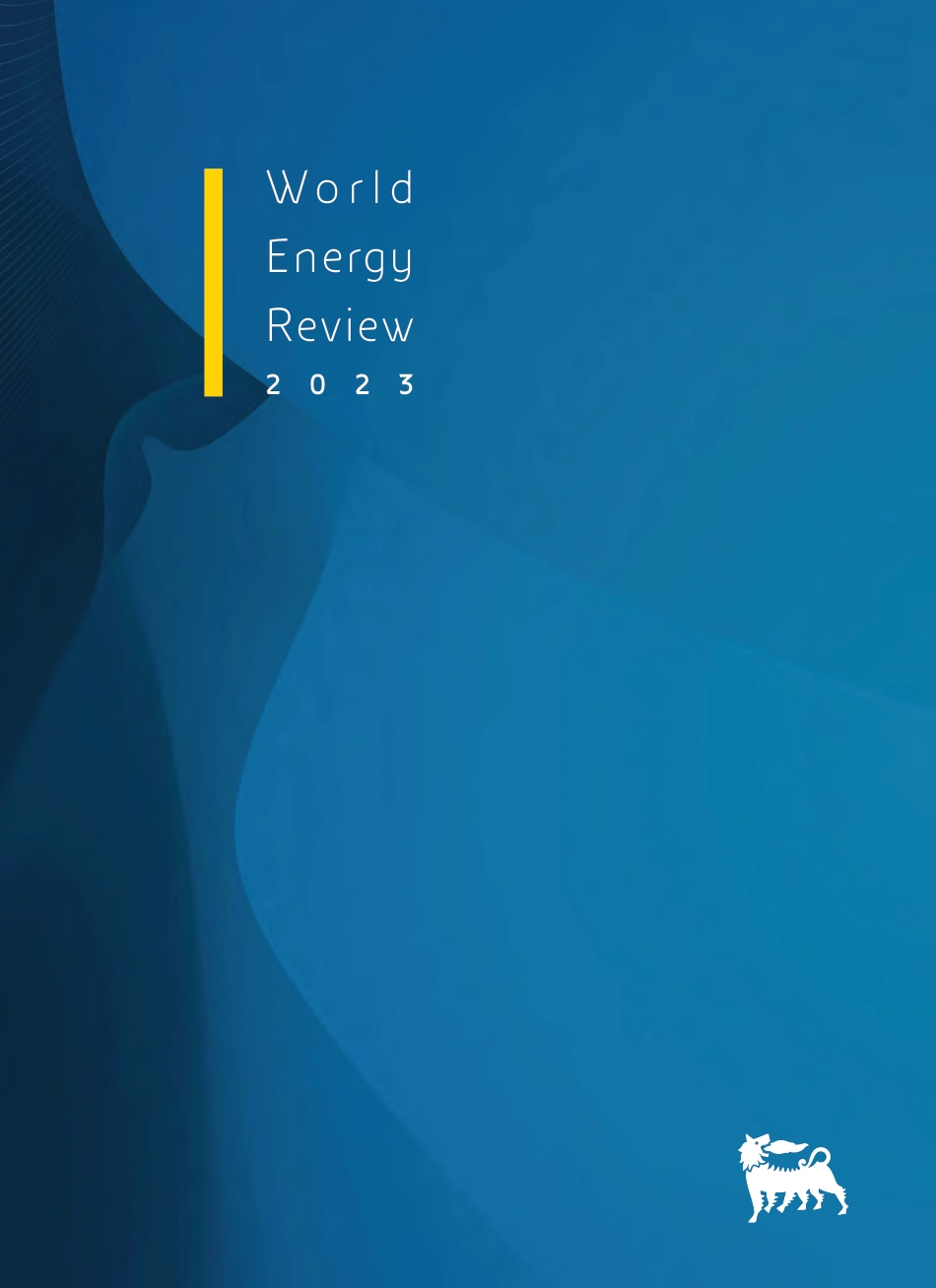Wo r l dEnergyReview2023Wo r l dEnergyReview2023In 2022 the energy market, which was gradually recovering from Covid pandemic, experienced a new discontinuity due to the Russian invasion of Ukraine.The war had major ramifications on the global economy, the drastic change in the monetary policies of Central Banks, the need to reconsider energy flows with the exclusion of Russia’s oil and gas volumes.In the World Energy Review (WER), now at its 22nd edition, the evolution of the main energy variables is depicted: oil, gas, new renewables and critical minerals. Specifically, in 2022, the following highlights emerge:• World Energy Mix - World primary energy consumption grows at a rate close to 1% vs. 2021, confirming the almost un-broken trend of recent decades. In terms of composition, fossil fuels continue to cover about 80% of energy demand, an amount that has been essentially stable for 30 years. The share of renewables (solar and wind) in the energy mix grows, but their weight still remains limited, at just 3%.• Oil - Prices up 43% y/y (Brent at 101.2 $/b), amid continuing demand growth (+2.2 Mb/d) to 100 Mb/d, almost fully recovering from the pandemic-related loss (-0.7% vs 2019) with an equal contribution between OECD (+1.1 Mb/d) and non-OECD (+1.1 Mb/d). World oil production increases by 4.3 Mb/d, with growth concentrated in Gulf OPEC countries due to the unwinding of 2020 cuts. In terms of crude quality, a halt in the barrel lightening process is confirmed, with a slight decrease in the share of Light crudes in favor of Medium and Heavy crudes. Net refining capacity returns to grow in 2022 with the entry of new projects in the Middle East and China amounting to just under 2 Mb/...



